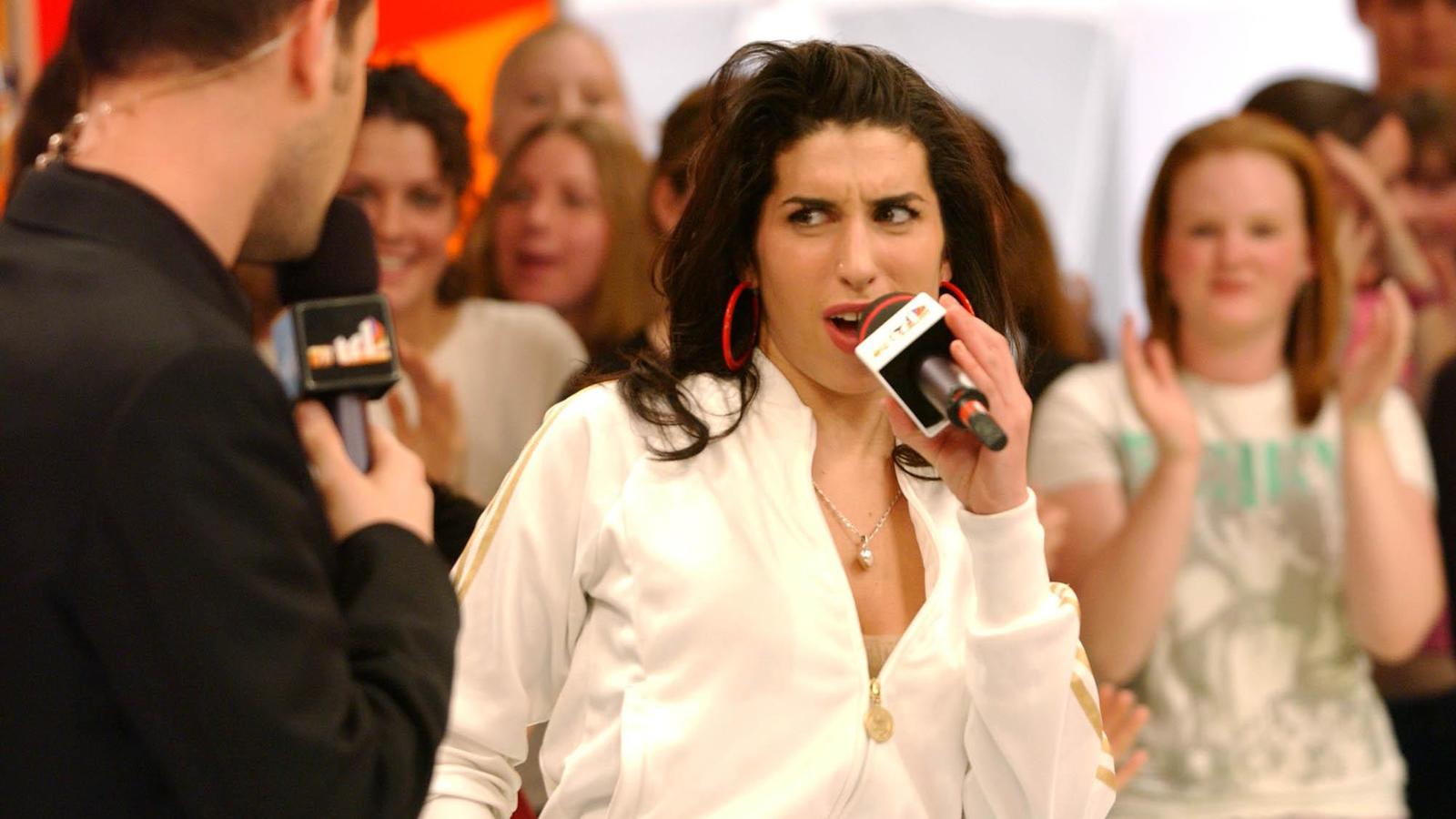
The debut of a diva: Amy Winehouse's 'Frank' 15 years later
"My greatest fear is dying without anyone knowing of any contribution I've ever made to creative music,” is what Amy Winehouse stated in an interview shortly after releasing her first album.
In October 2003, before the era when artists like Sam Smith and Adele were heating up the charts, there was Amy Winehouse — a jazz artist who put her mark on the world with her debut album, “Frank.” It was a cohesive, 15-track project oozing with soul, blues and a bit of hip-hop that was sure to be an album of discussion for decades to come. It was also an introduction to more female artists from the United Kingdom doing things their own way, attempting to be marketable to other audiences and waiting to see if the rest of the world would catch on to the wave.
In the early 2000s, British artists like Coldplay, Daniel Bedingfield, Dido and Elton John were dominating the music scene while newcomers like Joss Stone and Floetry were bringing a new flair to the soulful audiences. And then there was Amy Winehouse — a singer whose voice was reminiscent of the Harlem Renaissance era.
Inspired by the likes of Otis Redding, Aretha Franklin, Dinah Washington and Sarah Vaughan, “Frank” beamed with elements of Winehouse’s idols to make her sound stand out among her peers.
To help perfect that sound, Winehouse worked with several producers, including Jony Rockstar, Matt Rowe and Stefan Skarbek. However, it was two other producers who greatly shaped her foundation: Gordon “Commissioner Gordon” Williams and Salaam Remi. Gordon was known for working with artists like Quincy Jones, Santana, KRS-One and Lauryn Hill, and Remi was behind the boards for artists like The Fugees, Biz Markie and Nas. With their resume of hit songs, these producers were sure to give Winehouse a promising debut — a project the singer often described as a jazz hip-hop album.
Winehouse set the jazz foundation with the album’s intro, scatting to the smooth backing of a bass player, before going into her lead single, “Stronger Than Me.” Remi put his trademark “broken bottle” production on the track to give Winehouse the beat-driven, hip-hop sound she admired. The singer’s lyricism tells of a scorned lover who believes her older partner should show more signs of maturity and responsibility for the relationship to flourish.
She then eases into overcoming heartbreak, on “You Sent Me Flying,” a track where Winehouse pursues a man to keep his attention but ultimately learns he carelessly sees through her intentions and has no mutual feelings. Then there is “Know You Now,” in which the singer wants to take a chance on a potential lover should they never cross paths again. It’s the first song on the album in which listeners hear Winehouse’s more traditional jazz sound. Between the scatting, smooth musicianship and old-school riffs, producer Gordon helped Winehouse reflect the classic music that inspired her.

Winehouse’s jazzy sound also showcased her masterful storytelling skills, as her vocals float effortlessly across the instrumentation. On “F**k Me Pumps,” she narrates the day-to-day life of a promiscuous woman who hopes to find Mr. Right. “Cherry” may initially make listeners believe the singer is describing a committed friendship, when in reality, she’s singing about her guitar. On the album’s second single, “Take The Box,” there is a heavy organ backing, but instead of sounding like a gospel record, Winehouse sings the blues as she cleans house after a fizzled relationship.
The standout is “In My Bed,” one of the few up-tempo tracks on the album in which Winehouse transformed her old soul into a classic hip-hop beat. Remi, the song’s producer, was never afraid to experiment with Winehouse’s sound. “In My Bed” did just that by sampling Nas’ 2002 hit “Made You Look” (also a Remi-produced track) but added a stronger horn section for Winehouse to elevate more jazz elements.
Besides naming the album after the great Frank Sinatra, Winehouse showed her appreciation for the genre that birthed her love for music by covering the 1936 classic jazz song “There Is No Greater Love.” Artists such as Billie Holiday, Nat King Cole and Etta James have all performed the song throughout their careers. With Winehouse adding it to “Frank,” it further proved she was a student of the game. “The music that speaks to me the most has always been jazz and that emotional connection to it that so many of the great singers had,” Winehouse said. “Everything that I listen to comes out in my writing. And I’m really not conscious of trying to be jazz-influenced; I just am.”
Throughout the album, Winehouse treated listeners to feelings of pride, honesty, sadness and vulnerability, creating a soundtrack of the highs and lows of relationships. Whether it was her contralto tone putting one’s mind at ease, making a listener reminisce about a sweet rendezvous or slow dancing at a juke joint, the lyrics and imagery from a then 20-year-old Winehouse showed how much she could appeal to even the most mature audiences. The complexity of her songwriting skills was well beyond her years and made listeners hang on to her every word. The album sequencing flowed from Winehouse being a hopeless romantic, to an abandoned lover, to finding solace in Mary Jane, and her raw talent and edginess gave listeners an insight into her life. “Frank” helped her establish an attitude and style that planted the seed for a bright career.

Commercially, “Frank” wasn’t as successful as her Grammy Award-winning follow-up, “Back To Black,” possibly due to its initial release being limited to European countries. However, the triple-platinum debut was an insight into Winehouse not succumbing to a popular sound and progressively changing the landscape for future artists. Over the years, fans started seeing the array of her influence, particularly with female musicians. Rising star Andra Day is the epitome of peak Winehouse, everything from her retro fashion sense to the winged eyeliner to her soulful tone channeling jazz greats. And 21-year-old singer Jorja Smith further proves the Winehouse formula of creating music content for young and old audiences. Then there’s Paloma Faith, who’s often been compared to Winehouse for her soulful tone. However, she adds more pop elements into her music production.
Artists of today are looking more to classic genres for inspiration. Hip-Hop artists are collaborating with jazz musicians more than ever before, while some R&B artists are reinventing eras like the ‘90s but with a new twist — a vision Gordon and Remi saw early on. In this industry, it’s important for artists to have their own style and create art that will stand the test of time. Winehouse did just that — even 15 years later, the replay value on “Frank” is still at an astronomical level and remains a blueprint for future artists.
Amy Winehouse unfortunately lost her life in 2011, and a piece of the music world strayed with her passing. Although her career was short-lived, her contribution to not only the jazz world, but music in general, will live on for eternity.
More must-reads:
Trending in Entertainment
Customize Your Newsletter
 +
+
Get the latest news and rumors, customized to your favorite sports and teams. Emailed daily. Always free!

